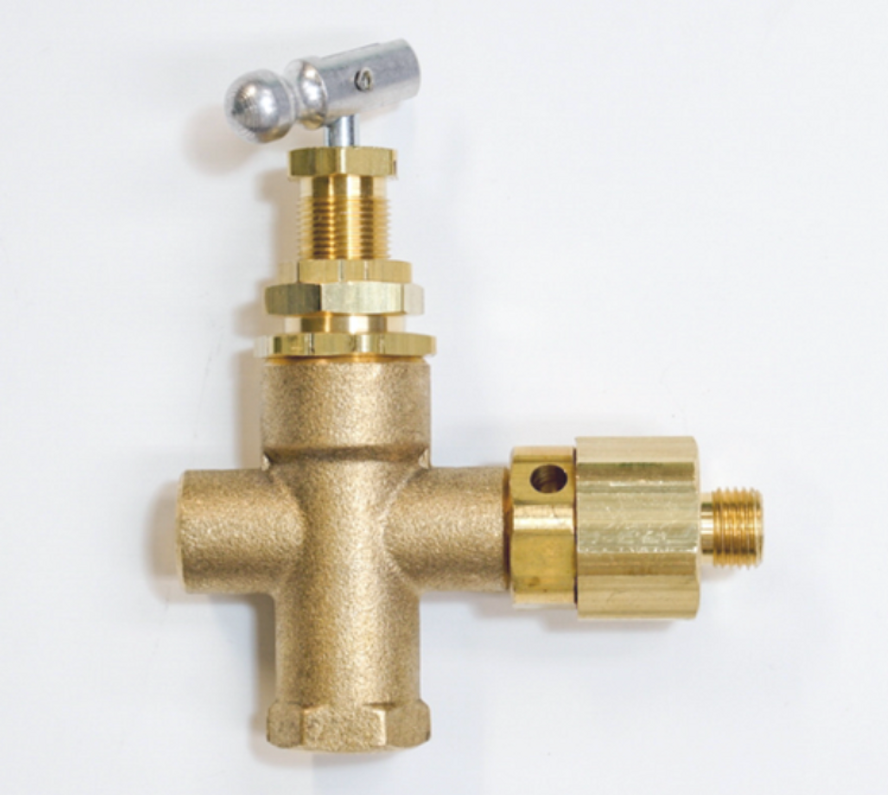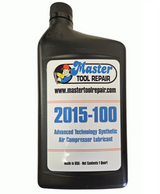Part of the Week: Understanding the Pilot Unloader Valve
Welcome back to our Part of the Week series at Master Tool Repair! This week, we’re shining the spotlight on an essential air compressor component: the Pilot Unloader Valve.
What is a Pilot Unloader Valve?
A pilot unloader valve is a vital component in air compressor systems. Its primary function is to control the compressor's load and unload cycles, managing the air pressure to ensure efficient operation. By regulating the pressure, the pilot unloader valve prevents the compressor from operating in a load position continuously, which helps conserve energy and extend the compressor's lifespan.
What are Pilot Unloader Valves Used For?
Pilot unloader valves are used in various applications where maintaining a consistent air pressure is critical. This includes:
- Industrial Settings: Ensuring that machinery operates efficiently and reliably.
- Automotive Shops: Maintaining the necessary pressure for tools and equipment.
- DIY Projects: Providing consistent air pressure for home improvement tasks.
- Small Businesses: Supporting air compressor systems in various commercial applications.
Why are Pilot Unloader Valves Important?
- Energy Efficiency: By controlling the compressor's operation, these valves help reduce energy consumption, leading to cost savings.
- Extended Compressor Life: Preventing the compressor from operating in a load position continuously reduces wear and tear, prolonging its lifespan.
- Optimal Performance: Ensures the compressor operates at the correct pressure levels, improving overall performance and reliability.
How It Works
The pilot unloader valve senses the system’s pressure and operates accordingly. When the pressure reaches the upper limit, the valve opens, allowing the compressor to unload and stop pressurizing. As the pressure drops to the lower limit, the valve closes, allowing the compressor to load and start running again. This cycle ensures that the compressor only runs in a loaded position when necessary, optimizing efficiency and reducing energy consumption.
Essentially, the pilot/unloader valve is analogous to an electrical pressure switch, controlling the cut-in/cut-out (or the load and unload) pressures of the air compressor.
Most air compressor systems that use a pilot/unloader valve to control the function as noted above are powered by gas, diesel, or propane. These compressors don’t use electricity to power the unit, so a pressure switch isn’t used. Instead, a pneumatic pilot/unloader valve is mated to a throttle/idle control valve (which routes to the engine’s throttle system). When the maximum pressure (PSI) is reached, the pilot/unloader valve is opened, which pneumatically triggers the throttle/control valve to idle the engine down to its unloaded position and kicks the RPM down as well. The compressor runs continuously but in an unloaded position, which means the pump is not pressurizing the air tank, but bypassing it, expelling the air from a vent on the pilot/unloader valve. Once the lower PSI setting of the valve is reached (the “cut-in” PSI), the pilot/unloader valve actuates the throttle/idle control once again, kicking the engine up to its higher RPM setting, which closes the unloader valve and allows the air tank to be filled once again.
Some electric-powered units also use a pilot/unloader valve in tandem with an electrical pressure switch. This is useful for applications such as on the job site for a contractor or by a serious hobbyist, where flexibility is important because these units can operate as “stop/start” compressors or “constant-run” compressors. These “dual-control” air compressors offer the user more flexibility; a “stop/start” compressor is suitable for lower or infrequent air delivery, whereas a “constant-run” compressor is more suited for a higher or more frequent air delivery application. The latter also saves the electric motor from turning off and on frequently, as the unit is constantly running, which improves the longevity of the compressor.
Featured Product: Pilot Unloader Valve, 125/155
Master Tool Repair is excited to feature the Pilot Unloader Valve, 125/155 PSI in this week’s spotlight:
- Pressure Range: Operates effectively within a pressure range of 125-155 PSI, suitable for various applications.
- Durability: Made from high-quality materials, ensuring long-lasting performance.
- Efficiency: Helps maintain optimal pressure levels, enhancing compressor efficiency and energy savings.
- Versatility: Compatible with a wide range of air compressor models, making it a versatile and reliable choice.
Visit Master Tool Repair’s Pilot Unloader Valve page to explore our selection of pilot valves to help regulate air compressor pressure by controlling load and unload cycles. Our team is here to assist with any questions you may have.
Recent Posts
-
The Breath of the Pump: Why Your Air Compressor Needs a Healthy Crankcase Breather/Vent
Your air compressor is a powerhouse, a workhorse essential to your operation. We all know the import …Dec 4, 2025 -
The Quiet Killer: How a Clogged Air Compressor Filter Destroys Your Pump
A well-maintained air compressor is the lifeblood of your workshop or job site. It runs reliably, re …Nov 19, 2025 -
The Benefits of Synthetic Air Compressor Oil: Why It's Worth the Investment
Your air compressor is a powerhouse, an indispensable tool that keeps your business running. Yet, th …Nov 11, 2025




